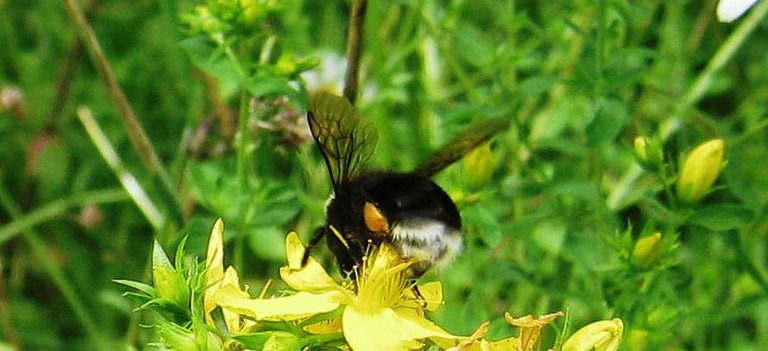How bees and other pollinators are helping wildlife – and us – thrive and survive
You might have been the kid who saw a bee and quickly bolted in the opposite direction, or you might have enjoyed sitting in the garden, watching the bumblebee’s endearing fuzz-covered body drone from flower to flower.
Maybe you were even lucky enough to witness wild-colored butterflies flutter around, or a hummingbird zip by the window at what seemed like the speed of light.
In whatever way you have learned to love, or simply live with them, pollinators can sometimes be overlooked for the big work that they do.
Big and small, pollinators help ‘em all
If you’ve been reading the news recently, you have probably heard that pollinators are a vital part of a healthy ecosystem. These tiny badasses of the wild are a pretty popular topic, as they should be! Pollinators’ impact on all species — including people — is nothing short of incredible.
While native bees are perhaps the most famous pollinators, other winged creatures such as wasps, beetles, flies, moths and bats, are also on the list.
Pollinators are small animals whose main job is to gather pollen and transport it from one flower to the next. This process, called cross-pollination, is essential in producing many of the things important to both people and wildlife’s daily lives, such as fruits, veggies and nuts.
In fact, about 80 per cent of all flowering plants, and more than three-quarters of the staple crop plants that feed us, rely on animal pollinators.
Larger animals like carnivores are a big part of the Yellowstone to Yukon region, but without the contributions of pollinators, their lives would probably be unsustainable.
To look at how this might impact species in the region, we’ll explore bears as an example. Grizzlies in and around Montana’s Glacier National Park eat a mainly vegetarian diet, and rely heavily on huckleberries as a food source as they stock up on calories for hibernation.
Huckleberries, the fruit produced by the plant, need pollinators like bees to flourish. One study conducted in the area showed at least six bumblebee species pollinated the native huckleberry plants.
That’s just one way the work of pollinators impacts a piece of the larger ecosystem and why we must protect them.
Connection and protection for pollinators
Grizzly bears are often called an umbrella species because if we adequately conserve bears, that action will benefit many other species.
Likewise, the well-being of pollinators is a critical stepping stone in creating and sustaining a thriving environment for other species. The work humans do to connect and protect pollinator habitat makes their job easier — whether that’s through making a pollinator-friendly garden, avoiding the use of harmful pesticides, or participating in local planting events.
Despite all their admirable qualities bees are sensitive to the Earth’s changing conditions, like most other species.
Y2Y and partner Idaho Fish and Game lead the Bees to Bears Climate Adaptation Project, an ambitious restoration project that works in favor of these climate sensitive species including two bumblebees, two amphibians, pale jumping-slugs and grizzly bears. Watch this short video to learn more.
You can also find more information about native pollinators in your area on the Xerces Society’s website, one of Y2Y’s partners working to conserve pollinators across North America.
In many ways, you are helping protect some of the smallest species in the Yellowstone to Yukon region, as well as supporting communities who know how important they are. We’re sure they’d ‘bee’ very grateful, as are we!


